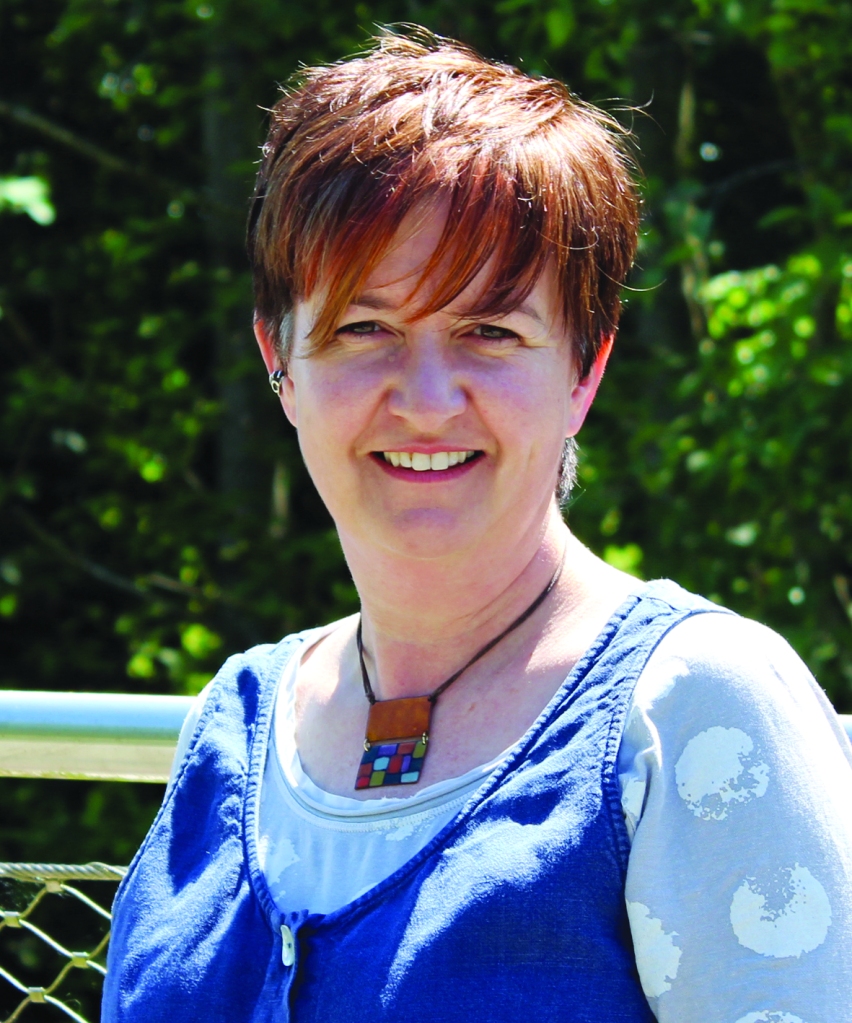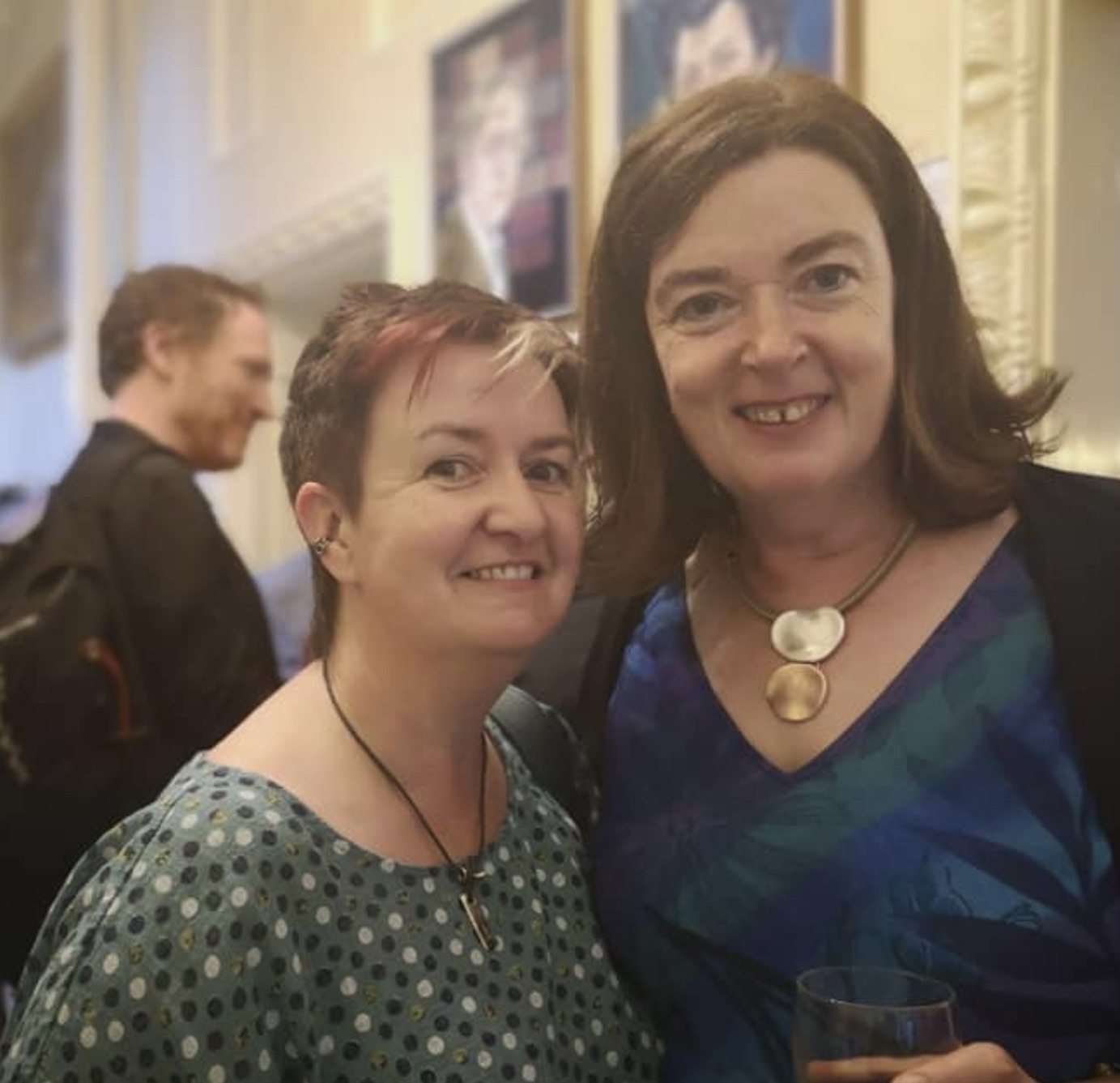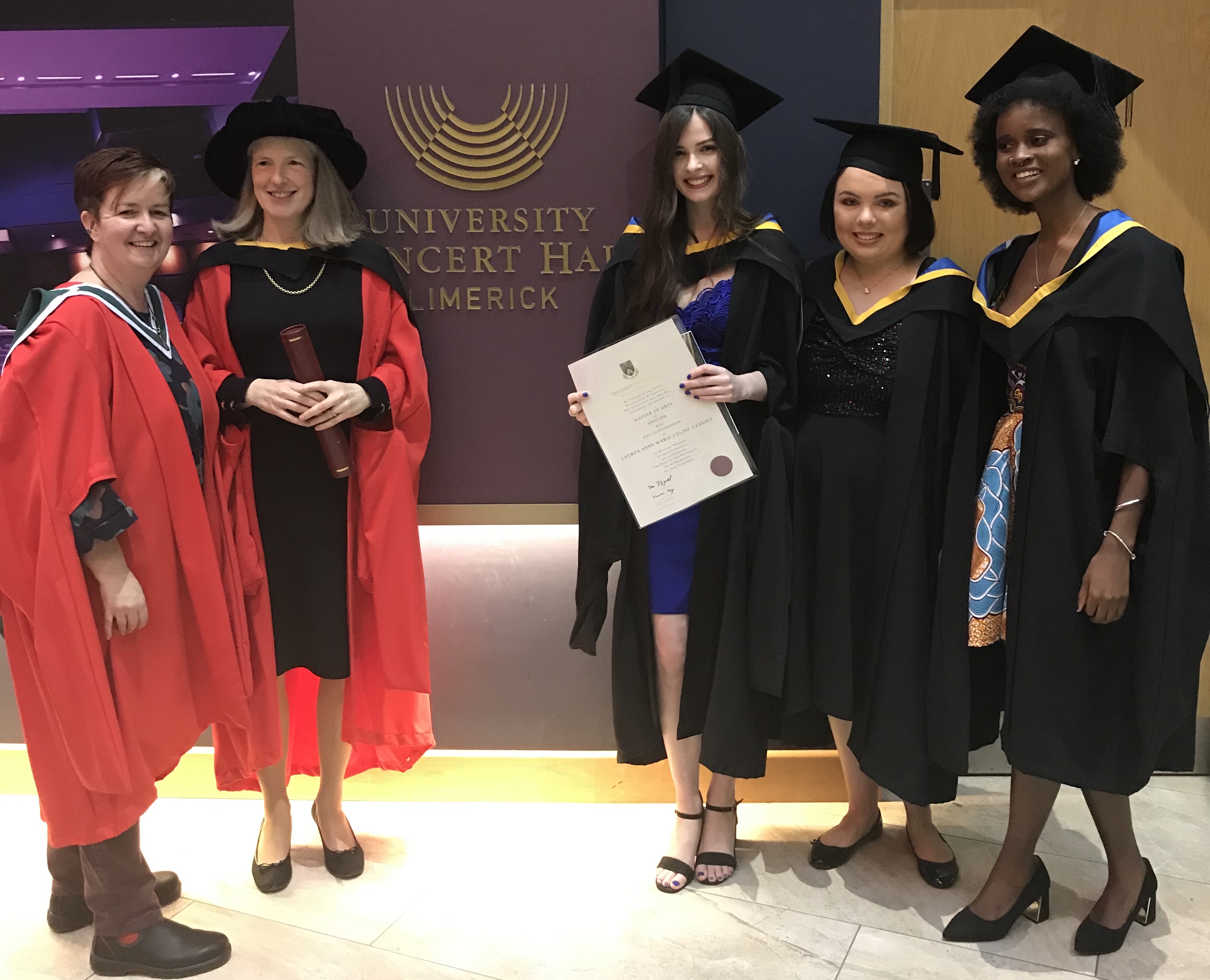Research Pioneers 12: Tina O’Toole
Tina O’Toole has been recognised as a leading scholar in Irish women’s studies since her first full-length published work, the Dictionary of Munster Women Writers, emerged in 2005 and added important names to the growing list of Irish women writers who had long been overlooked and/or understudied. O’Toole continued her excavation of under-represented Irish authors in her monograph The Irish New Woman (2013), and brought together a range of commentators on the confluence of women, writing and conflict in her co-edited volume Women Writing War: Ireland 1880-1922 (2016). Alongside a lengthy catalogue of her other published works, these texts combine to consistently question the masculine bias of Irish historiography in general and the Irish literary canon more specifically. Throughout her career, O’Toole has continued to make important feminist interventions in and correctives to the assumed landscape of Irish literature. In doing so, she has challenged perceived ideas about Irish gendered and sexual identities and has engaged in the process of introducing or reintroducing marginalised voices to national debates about these issues.
She is currently Course Director for the MA English at the School of English, Irish, and Communication at the University of Limerick, where she has worked since 2004.
This is the twelfth interview in the Research Pioneers Series conducted by Anna Pilz & Whitney Standlee. Our first interview with John Wilson Foster is available here, Heather Ingman and Clíona Ó Gallchoir is here, James H Murphy is here, Heidi Hansson is here, Lucy Collins is here, Gerardine Meaney here, Margaret Kelleher here. David Clare, Fiona McDonagh and Justine Nakase here, Elke D’hoker here, Mary S Pierse here and Julie Anne Stevens here.
Q: What initially drew you to the study of Irish women’s writing of this period?

Dr Tina O’Toole
TO’T: Like many Irish people I’ve always had a strong attachment to historical narratives, not least because violently contested versions of the past were within touching distance throughout my 1970s childhood, broadcast daily from the streets of Belfast, Derry, and small towns and villages that looked like my own. During my MA in Women’s Studies at UCD (WERRC) I studied with Margaret Mac Curtain, whose scholarship influenced an entire generation of scholars in various disciplines; her importance as an educator cannot be overestimated. In her class, I was introduced to Irish women’s history for the first time, attending guest lectures by Mary Cullen, Maria Luddy, and others, reading Margaret Ward’s Unmanageable Revolutionaries (1983) and Anna Parnell’s The Tale of a Great Sham (ed. Dana Hearne, 1986). Under Gerardine Meaney’s supervision, I wrote a thesis (1993) on national, gender, and sexual representations in Kate O’Brien’s fiction. Subsequently I continued to excavate the Irish literary past, initially out of curiosity about Kate O’Brien’s influences, interrogating her radical approach to gender and sexuality in what we often perceive as a very conservative period in Irish culture. The formative period in her life, of course, was awash with new social movements and, as I read, I began to realise how radical avant garde culture in the period was. I was hooked.
Q: Which researchers helped and influenced your own work?
TO’T: UCD’s English department, WERRC, and an active involvement in student politics, were central to my first research experiences; I learned a lot from my peers and teachers there in the early 1990s, I remember Yvonne Ivory introducing me to Adrienne Rich’s work, which was very exciting. Ailbhe Smyth was a hugely important teacher and activist role model in those years, and I had excellent research mentors in Gerardine Meaney and, later, Patricia Coughlan at UCC. Their scholarship and pedagogy influenced my early work, and continues to do so. At early career stage too, my research was influenced by the 1890s scholarship of Sally Ledger, Lyn Pykett, Joseph Bristow, and Margaret Stetz, among very many others; Angela Bourke’s The Burning of Bridget Cleary (1999) and Margaret Kelleher’s The Feminisation of Famine (1997) were crucial to the formation of the Irish aspect of my scholarship. All proved to be supportive of my efforts, which was, of course, terribly important to me at that stage especially. After that, really, it’s invidious to name names; suffice it to say that the work of a significant number of literary scholars has influenced mine – and that I’ve always been heartened to discover that very many overworked senior colleagues are nonetheless unfailingly generous and supportive with their time and resources. I’ve been fortunate, too, in having the support of like-minded people from my own generation who (somehow) survived the 1980s in Ireland and went on to make important interventions; I’m thinking in particular of good friends like Yvonne Ivory, Gillian McIntosh, Anne Mulhall, Clíona O’Gallchóir, and Moynagh Sullivan, among others, whose research and practice continues to influence and inspire me.



Q: Your work on the Dictionary of Munster Women Writers is a dedicated effort in feminist recovery that brought to light over 500 women writers who worked in both the English and Irish languages across a variety of genres, including folk and song traditions. What were your early experiences of attempting to make inroads into the study of Irish women writers? Did you find your work was welcomed, or were there battles to be fought?
TO’T: One of the advantages of my scholarly apprenticeship, as I’ve mentioned, was being grounded in a supportive and collective scholarly practice. My first experience of post-doctoral research and publication was interdisciplinary and collaborative; I was Project Researcher on two strands of the government-funded “Women in Irish Society Project” at UCC (funded under PRTLI 1). As part of that initiative, directed by Patricia Coughlan, Éibhear Walshe, and Linda Connolly, The Dictionary of Munster Women Writers emerged. Of course, that’s not to say that it was all plain sailing, especially when it came to securing an academic post – while the academic market was not nearly so gruelling twenty years ago as it is today, nonetheless, many of us experienced significant obstacles in gaining entry to the profession. I was advised more than once by well-meaning friends to publish on a malestream canonical author for a few years before switching back to “the women” when established; those who could take that advice evaded some of the more bruising encounters the rest of us had with interview and promotions boards over the years. In some quarters, the assumption persists that first generation scholars are somehow not up to the job, and those of us who exacerbate matters by publishing on non-canonical authors or on less-than-traditional topics, well … I was lucky in having sustained encouragement from within my immediate circle, and without the support (and endless reference-writing) of Pat Coughlan and Sally Ledger, in particular, I’m not sure I’d have persisted.
Q: Can you recall a particular ‘Eureka moment’ from the archives?
TO’T: There’ve been very many revelatory moments, rather than one stand-out highlight. The excitement of first encountering an original handwritten document is one that stays with me. For instance, I still remember the thrill of reading George Egerton’s first letter to John Lane at the Bodley Head as she despatched her first short stories from the post box in Millstreet, Co. Cork – or of first seeing Oscar Wilde’s large, looping hand on a manuscript. More recently, reading Rosamond Jacob’s handwritten copybook drafts of her work, or Kate O’Brien’s later letters (recently acquired by the Glucksman Library at UL) produce the same shiver of excitement.
Q: Recently, there has been a good deal of discussion about diversifying and internationalising Irish Studies in terms of representation and in terms of the geographical contexts in which writers and texts are being studied. Thinking about your own work and its trajectory, can you offer some reflections on the regional focus of your early research in light of more recent trends and developments in Irish literary studies?
TO’T: I have a longstanding interest in local studies, and in retrieving the lost histories of people whose writing and experience falls between the cracks in official national accounts of the past. While my post-doctoral research certainly focuses on the regional, on Munster women writers, the authors central to my postgraduate research, Kate O’Brien, Sarah Grand, and George Egerton, were serial migrants, nomadic figures who travelled widely – moving between Limerick and Spain, Donaghadee and the South Sea Islands, Millstreet and Oslo by way of Dublin and New York. As such, I’m not sure it’s possible in Irish studies to just focus on the local – neighbourhood, parish, county, region – without acknowledging the wide sweep of transnational exchange that underpins the local economy, profiles Irish culture internationally, records and plays back local tunes to us from across the Atlantic. This also involves grappling with home truths, of course, as I know from my research on Roger Casement; we uncover accounts of indigenous exploitation, Irish households who profited from the slave trade, or the more recent deployment of Celtic symbols and the Irish language by white supremacists in the USA. When I first went to Canada on an international research fellowship in 2000, and again more recently during teaching visits to Brazil, I was struck by how little is known about the diasporic Irish experience there on this side of the Atlantic, the extent to which the cultural production of Irish-Canadians or the innovations of Latin American Irish studies has tended to be ignored here in Ireland. It’s only quite recently that this scholarship has begun to gain recognition in the wider Irish studies community, an endeavour in which IASIL (the International Association for the Study of Irish Literatures) and SILAS (the Society for Irish Latin American Studies) can take no small credit. It’s about time we began to see Irish studies as a hybrid zone, rather than one in which “we” export a supposedly authentic cultural product overseas; we’ve a lot to learn from living and working in hybrid cultures here and abroad, that draw on a multiplicity of languages and literary landscapes, and unsettle our easy assumptions about Irish identities.

Q: Your 2013 study The Irish New Woman has been described as a project which ‘draws to the foreground the uniqueness of the Irish woman’s situation within the wider history of Western feminism’ (Sydora 2014). What, in your view, are the uses and abuses of arguments concerning an Irish female exceptionalism?
TO’T: Some of the comments I’ve just made above might be read in response to this. All of these categories – “Irish”, “Victorian”, “the 1890s” are contingent, of course, just as in activist movements we use political identities strategically to advocate or clear the ground for a particular discussion or push for change.
Q: In 2017, you edited the volume Women Writing War: Ireland, 1880-1922 alongside Gillian MacIntosh and Muireann Ó Cinnéide. This collection of essays examines women’s war writings across a range of genres, from Winifred Lett’s poetry and Emily Lawless’s A Garden Diary to the letters written by Roger Casement’s female correspondents and Eva Gore-Booth’s non-fictional reflections on the Easter Rising. This comparative reading across genres is a very productive and inviting approach to our understanding of the scope and importance of Irish women’s experiences and writing. How has the work on this collection shaped your thinking about questions of genre, and where do you see the most promising avenues for future research in Irish women’s writing?’

TO’T: Well of course, feminist scholarship has always pioneered generic variety, not least because in some periods it can be difficult to find mainstream publications authored by women. When we had our early exchanges with the advisory board for the Dictionary of Munster Women Writers, the decision emerged quite emphatically that we would include writers of diaries, cookery books, chick lit, and science, as well as the more traditional (for scholarly texts at the time) literary fiction, poetry, and prose. When it came to Women Writing War, our editorial focus was similar. That said, the research for my own essay on the women activists in Roger Casement’s circle pushed me outside my own comfort zone somewhat, in that I realised how much I rely on having a published text – usually a literary one – on which to centre my analysis.
As literary scholars, our work is usually predicated on the paths taken by creative writers and editors. As such, recent publications like Chiamaka Enye-Amadi’s Writing Home collection (2019), offer scholars of contemporary Irish writing new research paths. Also, recently the outpouring of personal essays and prose collections, pioneered by Lia Mills and recently exemplified by Sinéad Gleeson, Emilie Pine, and Doireann Ní Ghríofa, among others, has been an interesting development too – several of my supervisees have come in with research proposals involving these collections, which is often a sign of where the energy in a given field is at a given moment. One of the most important developments for scholars in our period, of course, has been the increasing availability of primary literary sources and archival material as the result of pioneering work in digitisation projects and anthologies, such as for instance Gerardine Meaney’s current project on Rosamond Jacob’s diaries or Sinéad Gleeson’s The Art of the Glimpse (2020). This kind of ready access makes it possible to teach and write about a wealth of women’s writing, much of which was invisible to young scholars in the 1990s. That’s very exciting, it seems to me, and bodes well for the future of Irish literary scholarship.
Q: What book, play or poem/poetry collection written by an Irish woman written between 1880 and 1920 do you feel deserves more attention and respect, and why?
TO’T: There are too many to choose from. Katherine Cecil Thurston’s Max (1910) could certainly do with more critical attention, for instance. Of course I’m bound to mention George Egerton here, her short stories have been vastly underrated, it seems to me, and individual stories from her various collections are minor masterpieces, “The Spell of the White Elf” from Keynotes (1893) to give just one example. These have become more accessible thanks to digitisation projects so anyone can look those stories up online and read / teach / research them, but it’d be great to see her only novel The Wheel of God (1898) reissued, it has much to recommend it.
Q: It is often the case that in conversations such as this, research takes precedence over teaching. Yet you are an example of a researcher who clearly prioritises your commitments to teaching, and received the University of Limerick Teaching Excellence Award in 2016. What Irish women’s texts do you find most productive in terms of engaging students in questioning their preconceived notions of Irish identity and the Irish literary canon, and why?
TO’T: I’ve been teaching a lot of Elizabeth Bowen’s work in recent years; The Heat of the Day provides a very useful way in to vexed questions of Irish and British identity at mid-century, opening up nationalist simplifications to scrutiny. I’ve already mentioned Angela Bourke whose 2004 biography of Maeve Brennan, Homesick at the New York, is a crucial text for us in addressing issues of gender and transnational Irish identity – and the biography itself is a masterpiece, of course. In the past few years, Anna Burns’ Milkman (2018) and Melatu Uche Okori’s This Hostel Life (2018) have been central to my final-year module on Contemporary Irish Literature, and of course, Anne Enright’s work is key to this kind of exploration – her writing is a constant focal point for my teaching, The Green Road (2015) especially useful in relation to this kind of question.

University of Limerick Winter Conferrals 2020, with supervisees Paula McGrath (PhD), Lauren Cassidy (MA), along with Amy O’Donovan (MA), Sandrine Ndahiro (MA)
Q: Having listened to you speak at a roundtable on ‘Feminist Wonder’ during the IASIL conference 2019 on the topic of fiction and its role in education, we are wondering how you balance the different roles of researcher, teacher, and activist. What would be your advice to a new generation of young academics hoping to enter into careers in higher education?
TO’T: I’m not sure that I do balance them, really – I’ve usually managed to keep two of these roles in play simultaneously but rarely all three. For instance, while trying to hold down several jobs during my MA (as a part-time student), I didn’t have any spare time for activism. Having moved to Cork in the mid-1990s, I re-engaged with feminist and LGBTQ+ activism again. I find it a real struggle to maintain balance between activist and other commitments, when in the middle of a campaign or whatever; for instance, when we were trying to get LINC off the ground (www.linc.ie) and I was teaching full-time, my doctoral research progress stalled. In the past decade or so, professional demands increasingly take up my time, so activism has taken a back seat again. I’m not one for advice like this, really, we can each only make our own decisions about how best to live – plus, I’m not sure how useful it’d be to apply what I’ve learned to the wholly changed landscape of higher ed today. Research and community activism were crucial to me when I was younger, they seemed the only way we might work our way out of the enormously damaging social structures affecting our lives in Ireland. This is not to say “job done”, of course there are still startling inequities and injustices perpetrated in our names every day. I have huge admiration for friends and academic colleagues who sustain an active engagement in social movements alongside work and family commitments but, for now anyway, I have to content myself letting others take up the banner for a while.
To reference this blog:
Harvard style:
O’Toole, Tina. (2020), ‘Research Pioneers’, Interviewed by Anna Pilz and Whitney Standlee for Irish Women’s Writing (1880-1920) Network, (September, 2020). Available at: https://irishwomenswritingnetwork.com/2020/09/14/research-pioneers-12-tina-otoole/(opens in a new tab) (Accessed: Date)
See our full guide here.
Research Pioneers 12: Tina O’Toole
Tweet



